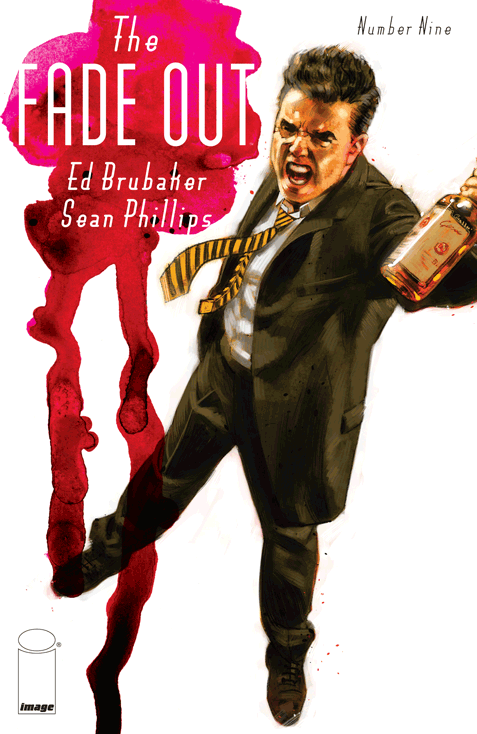Ed Brubaker and Sean Phillips begin the third act of their superb 1940s Hollywood murder mystery in "The Fade Out" #9, as struggling screenwriter Charlie Parish feels the noose tighten around his involvement in the recent murder of an up-and-coming actress. Brubaker's story picks up speed as it heads towards its conclusion, and Brubaker deepens the mystery by dropping hints that it goes far deeper than a single murder. Some story layers are peeled back while other are added, as Brubaker continues to reveal even more about Charlie as well as Gil, Charlie's secret writing partner. He also delivers some of the best characterization seen in the series so far, which is saying quite a bit.
During an exploration of Charlie's pre-WWII and wartime pasts, Brubaker shows a more optimistic side of the character during a more successful time in his career, which is a refreshing look at a different aspect of the character's personality and adds some punch by contrasting it to his far more troubled present day. During this look into Charlie's past, Brubaker sneaks in a revealing look at Gil as well, and both the friendship and animosity that polarize the relationship between the two men.
Brubaker establishes an interesting dynamic; Gil is shown to be openly happy and supportive of Charlie's early career success, but he also harbors resentment that floats to the surface after a few too many rounds at the bar. Gil's impetuousness eventually ruins both of the writers' careers, but Charlie's big-picture mindset amidst the backdrop of a world war drives him to remain friends with the man who ruined him. It's complex situation well executed by Brubaker, who shows character and circumstance combining to forge a complicated love/hate relationship between the two as they tagteam to save each other's careers in one moment and duke it out the next.
Phillips continues to immerse the story in its late 1940s setting, as he has done so well throughout the series. Every panel is drenched in the period; he convincingly captures cars, fashions, hairstyles and every other trapping, and the overall noir-ish vibe pervades nearly every single panel. Each page averages six-to-seven panels using exclusively standard layouts, as Phillips confidently lets each panel tell its part of the story without resorting to any kind of gimmick.
There are no gratuitous or showy splash pages, as they're not needed; Phillips simply brings Brubaker's story to life on a panel-by-panel basis, and that's all that's required. In fact, any attempt at a flashier presentation would only distract from the tense but fluid flow of Brubaker's script. Colorist Elizabeth Breitweiser doesn't try to impress either, refusing to use period cliches like sepia tones or a faded palette; instead, she largely goes with a fairly standard scheme which excels in part because the colors are scarcely noticed, which is almost a shame for such near-perfect embellishment.
"The Fade Out" #9 is an excellent chapter in an excellent series, made so with a well-crafted story by Brubaker and impressive synergy between himself, Phillips and Brettweiser.

